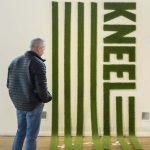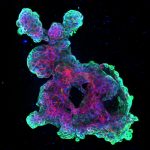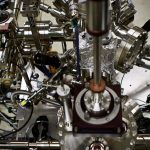Capturing the beauty of discovery
- Photo: Kaleb Dean
- Photo: Tara McCray
- Photo: Jeremy Schultz
Groundbreaking work happening in all corners of the university is now stealing the spotlight in a different form — as art for the annual Image of Research competition.
The competition, which is sponsored by the Graduate College and University Library, encourages graduate and professional students conducting research to share the beauty of their discoveries with the public through a still image or moving picture. Winners and other notable submissions are on display in the Daley Library from Oct. 25 through Jan. 30. The exhibit will also extend to the Library of Health Sciences from February to May 15.
All graduate and professional students and faculty are invited to attend an opening reception and awards ceremony for the exhibit at 3:30 p.m. Oct. 24 in room 1-470, Daley Library.
“This exhibit competition offers a really fun opportunity for students to have exposure, and it’s good practice for them to talk about their work,” said Kevin Monahan, coordinator of the exhibit and director of graduate program review.
An interdisciplinary panel judges the artwork’s originality, relationship to the research and aesthetic appeal to determine who wins or receives an honorable mention.
This year, finalists were selected from 80 submissions, 60 still and 20 moving images. Winning entries are all listed online.
Tara McCray, a student studying pathology, placed second in the still image competition. Her image captures her lab’s work with prostate organoids.
“Our lab is looking at vitamin D, which is actually a hormone, and chemo preventatives in prostate cancer,” she said.
Jeremy Schultz, who is in the chemistry program, placed third for his image, “In a Small Window.”
“My research is all about trying to use an interaction between light and plasmonic metal to probe the vibrations of single molecules,” Schultz said. “What kind of interactions happen when we look at something that’s that small.”
Schultz and McCray are proud of being recognized, but both say the real prize is getting to share what they do with the larger UIC community.
“It’s an interesting way to bring everything together,” McCray said. “Images are a different and great way to learn.”
“It’s incredibly useful to learn how to communicate what you’re working on for research,” Schultz said. “I think that’s how the most growth can happen.”



